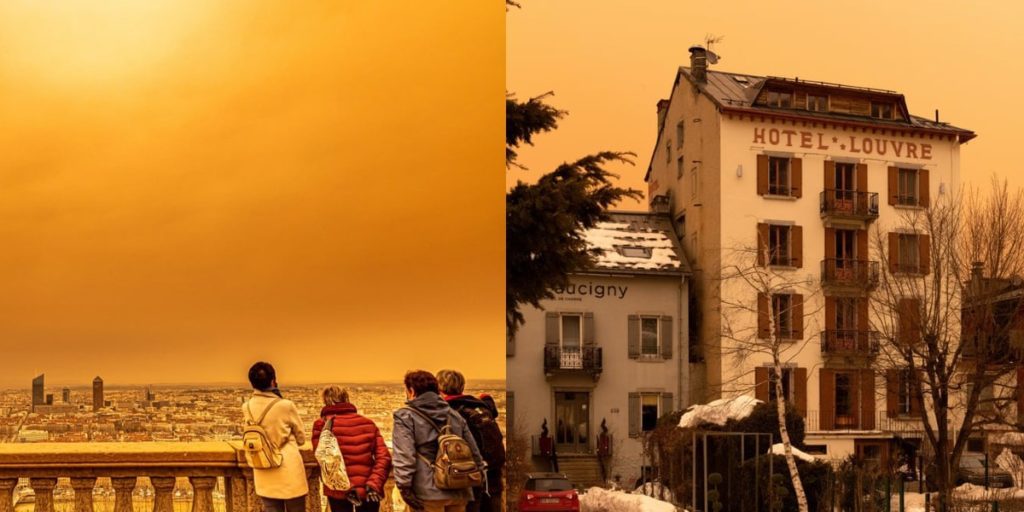We all have seen the sepia tone in movies and in photo filters and have used it judiciously. But imagine, nature puts on a filter, and you get to experience it live! That is what happened in Europe when Sahara’s sand blew and covered Europe in its stunning beauty. The sky and snow in the region turned orange. Let’s find out more about it.
Europe Turns Orange Thanks To Sands From Sahara
Saharan dust and sand blew and covered parts of Europe on February 6th. It resulted in turning the sky and snow into a shade of orange. According to SRF Meteo, this sand came from the north-west region of Africa, which contains the areas of Mauritania, Mali, and Algeria. They also stated that most of the sand is airborne between 2km and 5km from the ground.
Also Read: 7 Destinations In India More Beautiful Than The European Countryside
This out worldly meteorological phenomenon is due to a strong southerly airflow that brings spring temperatures and a large concentration of Saharan dust suspended in the atmosphere. It is estimated that it took one week and two days for the dust to travel from the desert to Europe.
The largest particles land on the ground while the smallest remain airborne and continue their journey northward. Social media accounts are flooded with beautiful photos that show how an African desert dust plume lit up the European skies in a beautiful orange glow.
Also Read: 6 European Countries That Provide Nearly Free Education To International Students
Sand storms and the environment turning orange is a common phenomenon in Middle East countries and desert regions. But for Europe, it’s an interesting phenomenon to witness snow-capped peaks turn bright orange, and the bright summery days turn grim. Meanwhile, if you’re interested to visit Europe, here’s a fun video to plan the ultimate itinerary.

